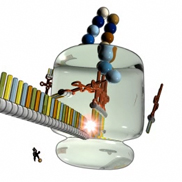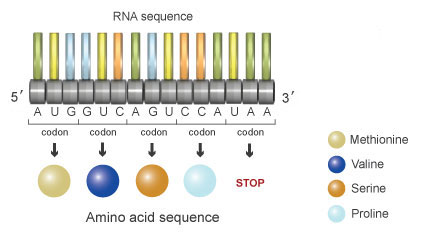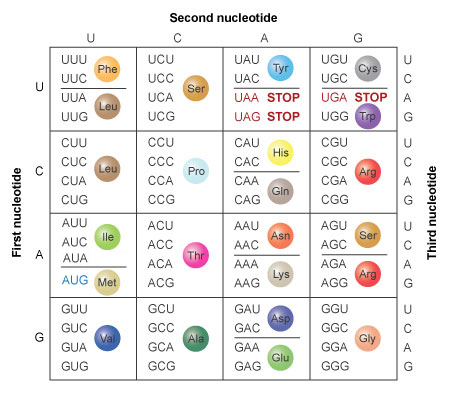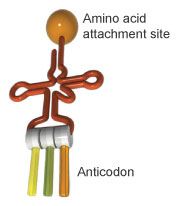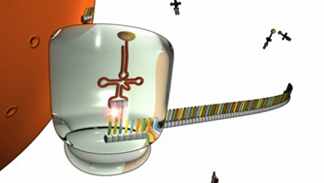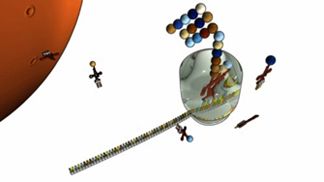To manufacture protein molecules, a cell must first transfer information from DNA to mRNA through the process of transcription. Then, a process called translation uses this mRNA as a template for protein assembly. In fact, this flow of information from DNA to RNA and finally to protein is considered the central dogma of genetics, and it is the starting point for understanding the function of the genetic information in DNA.
But just how does translation work? In other words, how does the cell read and interpret the information that is stored in DNA and carried in mRNA? The answer to this question lies in a series of complex mechanisms, most of which are associated with the cellular structure known as the ribosome. In order to understand these mechanisms, however, it's first necessary to take a closer look at the concept known as the genetic code.
What is the genetic code?
At its heart, the genetic code is the set of "rules" that a cell uses to interpret the nucleotide sequence within a molecule of mRNA. This sequence is broken into a series of three-nucleotide units known as codons (Figure 1). The three-letter nature of codons means that the four nucleotides found in mRNA — A, U, G, and C — can produce a total of 64 different combinations. Of these 64 codons, 61 represent amino acids, and the remaining three represent stop signals, which trigger the end of protein synthesis. Because there are only 20 different amino acids but 64 possible codons, most amino acids are indicated by more than one codon. (Note, however, that each codon represents only one amino acid or stop codon.) This phenomenon is known as redundancy or degeneracy, and it is important to the genetic code because it minimizes the harmful effects that incorrectly placed nucleotides can have on protein synthesis. Yet another factor that helps mitigate these potentially damaging effects is the fact that there is no overlap in the genetic code. This means that the three nucleotides within a particular codon are a part of that codon only — thus, they are not included in either of the adjacent codons.
The idea of codons was first proposed by Francis Crick and his colleagues in 1961. During that same year, Marshall Nirenberg and Heinrich Matthaei began deciphering the genetic code, and they determined that the codon UUU specifically represented the amino acid phenylalanine. Following this discovery, Nirenberg, Philip Leder, and Har Gobind Khorana eventually identified the rest of the genetic code and fully described which codons corresponded to which amino acids.
Reading the genetic code
Redundancy in the genetic code means that most amino acids are specified by more than one mRNA codon. For example, the amino acid phenylalanine (Phe) is specified by the codons UUU and UUC, and the amino acid leucine (Leu) is specified by the codons CUU, CUC, CUA, and CUG. Methionine is specified by the codon AUG, which is also known as the start codon. Consequently, methionine is the first amino acid to dock in the ribosome during the synthesis of proteins. Tryptophan is unique because it is the only amino acid specified by a single codon. The remaining 19 amino acids are specified by between two and six codons each. The codons UAA, UAG, and UGA are the stop codons that signal the termination of translation. Figure 2 shows the 64 codon combinations and the amino acids or stop signals they specify.
What role do ribosomes play in translation?
As previously mentioned, ribosomes are the specialized cellular structures in which translation takes place. This means that ribosomes are the sites at which the genetic code is actually read by a cell. Ribosomes are themselves composed of a complex of proteins and specialized RNA molecules called ribosomal RNA (rRNA).
During translation, ribosomes move along an mRNA strand, and with the help of proteins called initiation factors, elongation factors, and release factors, they assemble the sequence of amino acids indicated by the mRNA, thereby forming a protein. In order for this assembly to occur, however, the ribosomes must be surrounded by small but critical molecules called transfer RNA (tRNA). Each tRNA molecule consists of two distinct ends, one of which binds to a specific amino acid, and the other which binds to a specific codon in the mRNA sequence because it carries a series of nucleotides called an anticodon (Figure 3). In this way, tRNA functions as an adapter between the genetic message and the protein product. (The exact role of tRNA is explained in more depth in the following sections.)
What are the steps in translation?
Like transcription, translation can also be broken into three distinct phases: initiation, elongation, and termination. All three phases of translation involve the ribosome, which directs the translation process. Multiple ribosomes can translate a single mRNA molecule at the same time, but all of these ribosomes must begin at the first codon and move along the mRNA strand one codon at a time until reaching the stop codon. This group of ribosomes, also known as a polysome, allows for the simultaneous production of multiple strings of amino acids, called polypeptides, from one mRNA. When released, these polypeptides may be complete or, as is often the case, they may require further processing to become mature proteins.
Initiation
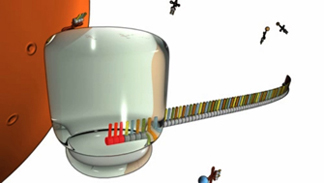
Figure 4: During initiation, the ribosome (grey globe) docks onto the mRNA at a position near the start codon (red).
At the start of the initiation phase of translation, the ribosome attaches to the mRNA strand and finds the beginning of the genetic message, called the start codon (Figure 4). This codon is almost always AUG, which corresponds to the amino acid methionine. Next, the specific tRNA molecule that carries methionine recognizes this codon and binds to it (Figure 5). At this point, the initiation phase of translation is complete.
Elongation
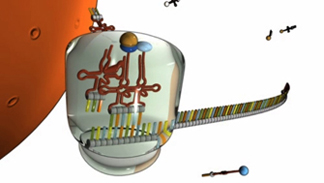
Figure 6: Within the ribosome, multiple tRNA molecules bind to the mRNA strand in the appropriate sequence.
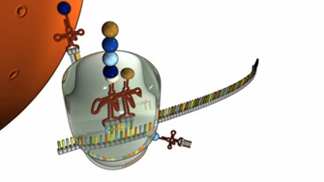
Figure 7: Each successive tRNA leaves behind an amino acid that links in sequence. The resulting chain of amino acids emerges from the top of the ribosome.
Termination
Eventually, after elongation has proceeded for some time, the ribosome comes to a stop codon, which signals the end of the genetic message. As a result, the ribosome detaches from the mRNA and releases the amino acid chain. This marks the final phase of translation, which is called termination (Figure 9).
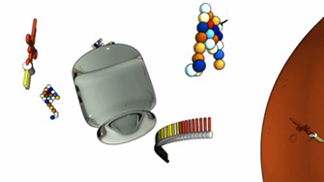
Figure 9: The translation process terminates after a stop codon signals the ribosome to fall off the RNA.
What happens after translation?
For many proteins, translation is only the first step in their life cycle. Moderate to extensive post-translational modification is sometimes required before a protein is complete. For example, some polypeptide chains require the addition of other molecules before they are considered "finished" proteins. Still other polypeptides must have specific sections removed through a process called proteolysis. Often, this involves the excision of the first amino acid in the chain (usually methionine, as this is the particular amino acid indicated by the start codon).
Once a protein is complete, it has a job to perform. Some proteins are enzymes that catalyze biochemical reactions. Other proteins play roles in DNA replication and transcription. Yet other proteins provide structural support for the cell, create channels through the cell membrane, or carry out one of many other important cellular support functions.







